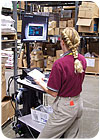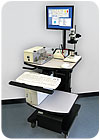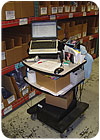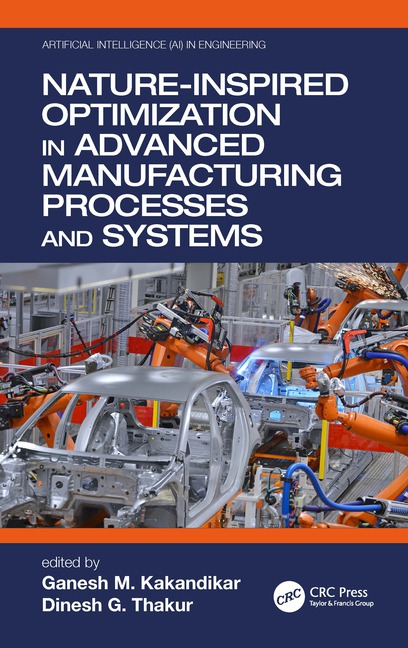
Traditionally, workstations tend to stay in the same place. But, wireless technology has created a new class of devices that easily move about the plant floor. Mobile powered workstations (MPWs) improve efficiency, eliminate waste and boost productivity.
Equipped with integrated power supplies, these workstations closely resemble mobile desks. They make it easy to maneuver computers, printers, bar code scanners and test equipment to wherever they are needed on an assembly line.
Mobile powered workstations save time and labor, improve employee morale and increase versatility. For instance, by significantly reducing foot travel and paperwork, an MPW can eliminate waste and cut costs. Countless hours are wasted every week as employees walk back and forth between sites where work is taking place, such as an assembly line or test lab, and a deskbound computer and printer where they log information into a database or print labels.
Often, these employees are merely keying in data they have previously written on paper at the work site. Or worse, they just rely on their memory, which leads to mistakes.
In sharp contrast, an employee working at a mobile workstation has continual, paperless, real-time access to information via warehouse management systems, enterprise resource planning or automated data collection software from anywhere in the facility, since the workstation’s computer is always at hand.
An MPW can carry a computer and relatively heavy peripherals, such as a high-volume label printer or a leak testing instrument. This type of system is far more productive than using handheld devices. Devices on the workstations can create mobile on-demand label printing stations or mobile test platforms.
This flexibility provides an opportunity to save time and labor through on-the-spot data entry, on-the-fly scanning and on-demand label printing. In a receiving department, for example, an operator can quickly scan barcodes or read radio frequency identification tags to identify an incoming shipment and then inspect, relabel and reroute it, all at the same workstation.
The fully functioning packaging, labeling, processing and inspection station can be moved to wherever it’s needed in the plant. A workstation could be used all morning at a receiving dock and then wheeled to the shipping department for the afternoon. A single MPW can often do the job of two or three stationary desks, which means fewer computers and peripherals are needed.

Hol-Mac Corp. uses 18 powered workstations at its Mississippi plants.
Employee Morale
The efficiency gains provided by an MPW benefit manufacturers. Consciously and subconsciously, employees know when their precious time is being wasted. They feel better about their jobs when they know they are doing work that needs to be done and doing it efficiently.Mobile workstations can also provide ergonomic benefits. Adjustable shelves and large, stable work surfaces accommodate different sizes of workers. A tall employee should be able to quickly raise a shelf to the most convenient height, while a shorter worker on the next shift should be able to lower it just as quickly.
Workstations should also have a compact footprint and should be easy to push, with large, easy-to-grip handles. Swivel casters should provide smooth, quiet rolling and positioning, but stability and safety at the work site. Mobile powered workstations should also have cable-management components that keep cabling for onboard equipment neat and tangle-free.
Before selecting a mobile powered workstation, it’s important to check the weight capacity of individual shelves and the overall unit. The workstation should also be powerful enough to run various devices simultaneously. Look for one that can hold and power four devices for at least eight hours and can be recharged in five to eight hours.
Any MPW should be modular so that it can accommodate different accessories for more than one task. Additional shelves and drawers, keyboard trays, laptop holders, flat-screen holders and scanner holders are important considerations.

This mobile, powered workstation features a computer, barcode scanner and label printer.
MPWs on the Line
Shipping accuracy was a major concern at the Magneti Marelli Powertrain USA plant in Sanford, NC. Management was determined to reduce the number of mislabeled outgoing pallets loaded with fuel-pump modules, electronic throttles and other components bound for automakers and boat builders. A typical shipment consisted of multiple pallets, each of which required at least two labels.The weak point in the shipping department turned out to be the 30 to 40 steps each inspector would have to take to the label printer. Sometimes, after inspectors had retraced their steps, labels in hand, the labels would end up on the wrong pallets.
The number of errors was significantly reduced once the company purchased some MPWs. Now, every inspector can scan and print labels right beside the pallet that needs them. Workstations can be easily maneuvered to the next pallet in seconds.
Hol-Mac Corp. is a contract manufacturer that fabricates and assembles parts for hydraulic cylinders and tanks. It uses 18 MPWs in different ways to improve efficiency, productivity and accuracy at its plants in Bay Springs, MS.
“We’ve eliminated a lot of footsteps,” says John Larrabee, Hol-Mac’s information technology manager. “We’re now able to bring our thin clients and other equipment directly to the job anywhere within our four facilities.”
Machinists have MPWs next to their machining centers, where they use them to access their database of detailed part dimensions and to check inventory for the next job. For quality assurance, inspectors of large weldments have MPWs equipped with test devices, as well as thin clients. In shipping and receiving, Hol-Mac employees use MPWs that carry label printers. A

